You are here
Heavenly mountains Kazakhstan.
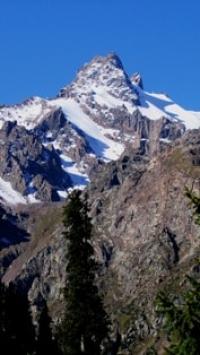
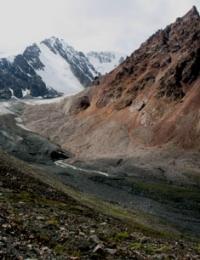
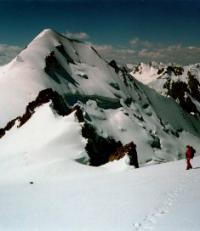
Trip in mountains Zailiiskiy Alatau.
"it looks as if the mountains are hanging in the sky, lighted, sharp peaks, heavy pyramids, grandiose domes, broken and round passes seem a solid wall erected at edge of the Earth"
P. P. Semenov-Tien-Shanskiy.
Tours to Northern Tien-Shan.
The Zailiiskiy Alatau (Motley mountains) is one of the largest northern arches of the range Tiеn-Shan (Sky mountains). On geographical maps this ridge is designated within the limits from the river Sharyn in the east up to the river Chu on the west and has the general extent of 380 km within these borders.
The north slopes face the plain which foothill is a fertile oasis. The significant part of the mountain chain located in the center is covered by "eternal" snows for 150 km. "it looks as if the mountains are hanging in the sky, lighted, - the known traveler and geographer P.P.Semenov wrote about his impressions - "sharp peaks, heavy pyramids, grandiose domes, broken and round passes seem a solid wall erected at edge of the Earth". The Zailiiskiy Alatau appeared in the last stage of history of the Earth during the period of the newest tectonic movements more than 10 million years ago.
Process of the mountain building now proceeds. Speed of the mountains growth is about 5-mm. per year, therefore earthquakes are so frequent in the region. Granites, diorites, form the ridge, and less often sandstones and porphyries form it too.
The Alatau is one of the rich and interesting areas of the Southern Kazakhstan and significantly differs by its individual, unique beauty. Combination of the magic tops capped with the eternal snows and grandiose gorges, dark green woods and florid alpine meadows.
Resources of region are the fertile grounds, fresh water, mountain air, various fauna and flora, minerals - basically construction materials. The unique feature of the nature of the Ile Alatau Mountains is that for one day of traveling without special expense of forces and time it is possible to cross all the landscape zones of the country due to such a phenomenon as vertical natural zones of foothills and mountains.
Up to 600 - 700 meters there's a semi desert and steppe zone.
The wormwood, wheat grass, sometimes thickets of a dog rose and a barberry grow here. People live in this zone and use it for agricultural activities. 700 - 1700 meters - a zone of steppes and deciduous wood.
Here agriculture is also well developed.
This zone flora is very rich - hereabout 600 kinds of plants grow. Among them are a wild apple-tree, which together with hawthorn forms fine groves; many birches and mountain ashes. In gleams apricot and apple groves bushes magnificently expand: a dog rose, a honeysuckle, sea-buckthorn berries, and a barberry.
1700 - 2700 meters. There is a zone of a coniferous wood, totally with 250 kinds of plants. In Kazakhstan there is a lot of places where the nature has saved relic plants of ancient period when among the trees of the present Kazakhstani south a Shrenk fur-tree, Sogdian ash and a poplar black reigned.
Above this zone at the altitude of 2700 - 3500 meters the Alpine zone is located. About 70 - 80 % of this zone has rocks, stony taluses and moraines with rare vegetation. And only 20 - 30% of the area has florid Alpine meadows.
The rocky-glacial zone covers the most part of the ridge from 3500 meters over the sea level. It is the area where the rocks, glaciers and rubble dominate. Water here drop out only in a firm kind, the climate is severe and extremely adverse for living. The vegetation here is very rear, only mosses and lichens.
For a long time, before the second half of the XIX century, the highland Tien-Shan (the Sky Mountains) remained absolutely unknown to the science. Presentations of the West-European scientists about the nature of this land were fantastic.
For example, a well known German geographer Alexander Humboldt approved that Tian Shan is the land of active volcanoes. In 1856 a young geographer Peter Petrovich Semenov, later Smenov-Tian-Shanskiy, arrived to Vernyi from Petersburg specially to research the Tien-Shan mountains.
He was given the second part of the surname in 1906, when celebrating the 50 anniversary of his first expedition. Before starting for a distant expedition he had gone to Germany to get a consultation from Alexander Humboldt whom he considered to be the greatest geographer of the world. By then Humboldt was already a very old man, and that's what he said:" Researching the Sky Mountains is one of the most nice tasks of the modern geographical science.
I could die in piece if you bring me the volcanic fragments from the Sky Mountains. I am only afraid of one thing - Humboldt continued, - I am afraid, misters Semenov, that you will not be able get to the Sky Mountains. You have invincible difficulties in front of you. There are intestine soldiers, the Asian tribes do not let Europeans visit them".
In winter of 1854 Semenov started to plan his trip to the Tien-Shan. During preparation he went to the Alps without a conductor. The scientist collects biological and botanical collections. Soon he was already in Petersburg. Semenov managed to convince a vice-chairman of the Geographical Society in necessity of the expedition to the Tien-Shan.
He was given the sanction to visit Altai and in "the Kirghiz steppes" (Kazakhstan). In spring of 1856 he travelled through Moscow, Kazan and the Ural Mountains on the big Siberian way, passing 100 km. per day. When P.P.Semenov saw the Sky Mountains for the first time, he exclaimed: "ah, what a mighty beauty!".
After he arrived to Vierney he could not stay there for long and soon took a first trip to the east coast of the lssik Kul Lake. He followed S.Valkihanov's routes, 4 months after him. Thus it's fair to consider that Valikhanov was the first researcher of the the Tien-Shan.
He gave a detailed description of the relief, geology and vegetation of the ridge; for the first time he defined high landscape zones. He proved the absence of modern volcanoes in the Tian-Shan which presence Humboldt assumed.
Semenov collected the rich material including 40 kinds of plants, among which 4 kinds that are still not known to the science, new kinds of the mountain ash and maple. At last he gave the first precise division and modern names to the northern chains of the Tien-Shan, based on their orographical and geological features so that all later travelers of the XIX century who visited the same territory could not add anything new to his data. His researches still have not lost the scientific value as modern geographers basically follow the scheme of the high zones he specified.
In this connection it is interesting to remember one story which happened to Semenov when he came to investigate our mountains. «Semenov descended from a horse and being accompanied by a conductor, started to look at the rocks. Red porphyries, pink and white granites.
No attributes of volcanism... when we will get to the Essik lake?
- First we reach a waterfall, - the conductor answered. And the road from the fall to the lake is very very bad. Absolutely no road. Above precipices we shall go!
"The traveler walking above the precipices of the Tian- Shan, remember: you are only a tear on an eyelash" Semenov remembered the old eastern proverb. He and the conductor simultaneously heard the joyful-disturbing shouts of hunters:
- Tigers, tigers!
The shot followed. New hazardous exclamations:
-Gone into the bushes.
Tigers also are mentioned in the book "Moscow and the Muscovites". Michael Hludov, the son of the millionaire-manufacturer, became famous for his binges in the Russian capital in the middle of the XIXth century. In the 60-s' he came to Central Asia, in just founded city Vernyi and returned to Moscow with a huge tiger.
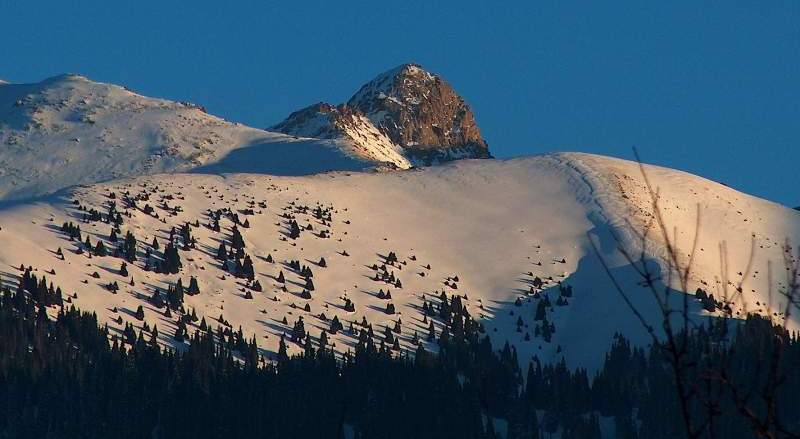
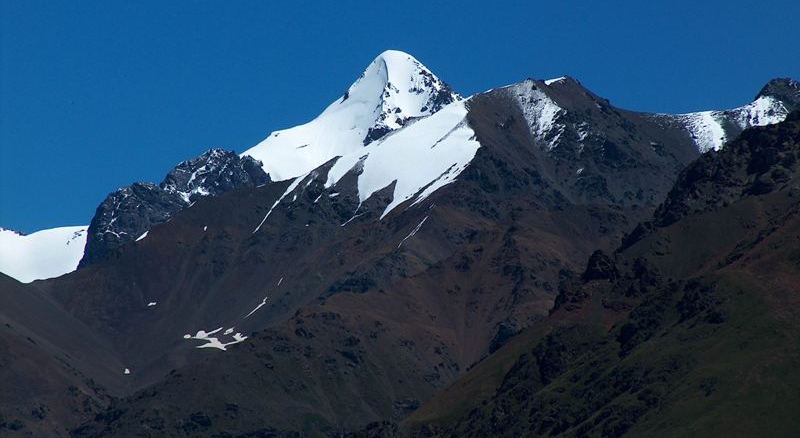
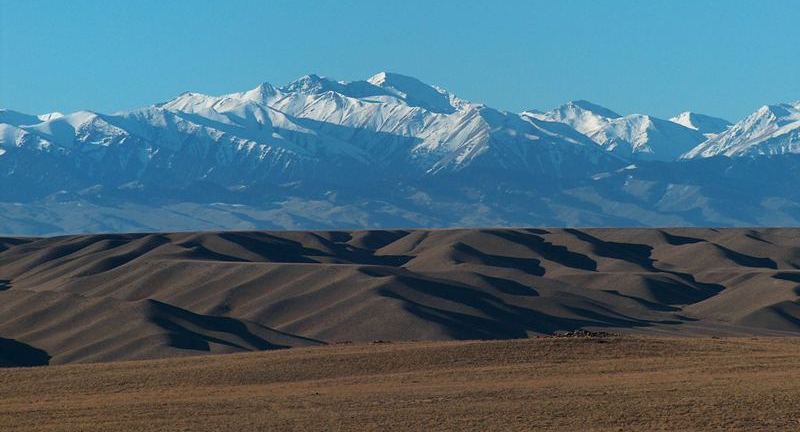
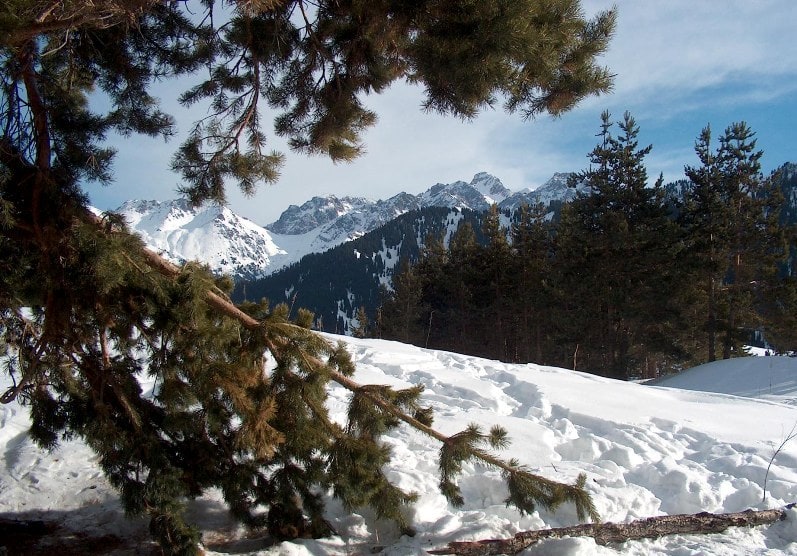
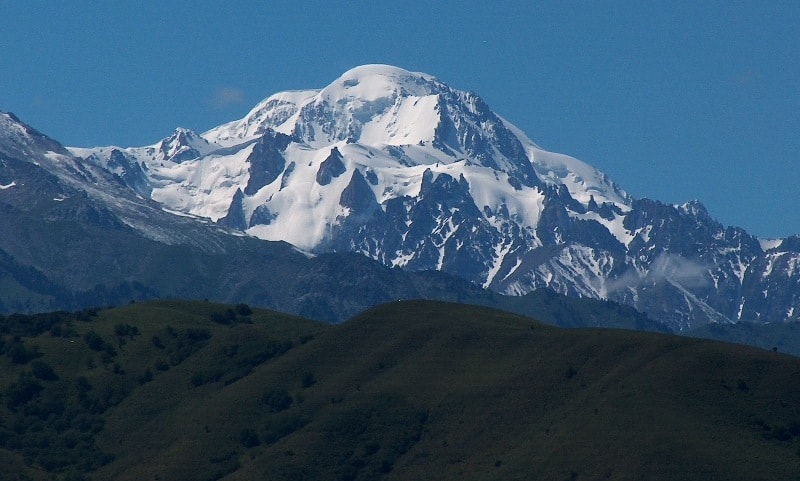

Authorship:
By the deserved worker of tourism of Republic Kazakhstan, The candidate of pedagogical sciences, the guide - methodologist Lyuterovich Oleg Grigorevich.
Alexander Petrov and Sergei Mikhalkov
photos.







